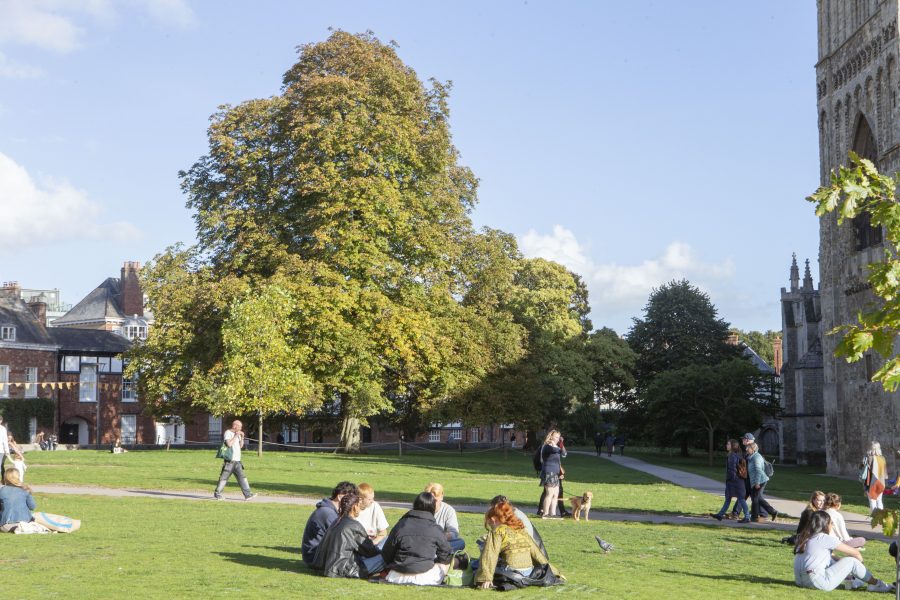Exeter is the ‘greenest’ city centre in Britain

An analysis of urban environments conducted by Sheffield University declared that Exeter is the ‘greenest’ city centre in Britain, based on its abundance of trees and park coverage.
The study looked at 68 municipalities across the UK with populations of at least 100,000 people, using satellite light absorption to measure vegetation in city centres. Results showed that Exeter had the greenest city centre in Britain, followed by Islington in London and Bristol. However, the lowest ranking city centres – Glasgow, Leeds, Liverpool and Sheffield – demonstrate a clear divide between North and South municipalities, regarding levels of green land.
Part of Exeter’s ‘green’ success is due to the large number of trees grown on our campuses. With around 10,000 mature trees planted around the university, this is supposedly one of the highest tree to student ratios of any university in the UK.
The vital need to identify green space inequalities even in the least obvious places and promote measures to address them
Dr. Paul Brindley
Interestingly, results showed that while Sheffield had little vegetation in the city centre, the overall levels of ‘greenness’ in the city were among the highest of the UK. It has the highest tree to person ratio than any other city in Europe.
The gap that has been highlighted through this study shows the lasting effects of industrialisation in the north. Senior author of the study, Dr. Paul Brindley, urged action to be taken to ‘close the gap’ between these cities. With predictions that “By 2050 nearly 70 per cent of the world’s population are […] to be living in towns and cities,” according to Dr. Brindley, this study highlights “the vital need to identify green space inequalities even in the least obvious places and promote measures to address them.”


